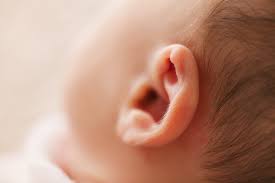Abstract
Genetic variants account for approximately half the cases of congenital and early‐onset deafness. Methods and technologies for viral delivery of genes into the inner ear have evolved over the past decade to render gene therapy a viable and attractive approach for treatment. Variants in SYNE4, encoding the protein nesprin‐4, a member of the linker of nucleoskeleton and cytoskeleton (LINC), lead to DFNB76 human deafness. Syne4−/− mice have severe‐to‐profound progressive hearing loss and exhibit mislocalization of hair cell nuclei and hair cell degeneration. We used AAV9‐PHP.B, a recently developed synthetic adeno‐associated virus, to deliver the coding sequence of Syne4 into the inner ears of neonatal Syne4−/− mice. Here we report rescue of hair cell morphology and survival, nearly complete recovery of auditory function, and restoration of auditory‐associated behaviors, without observed adverse effects. Uncertainties remain regarding the durability of the treatment and the time window for intervention in humans, but our results suggest that gene therapy has the potential to prevent hearing loss in humans with SYNE4 mutations.
Introduction
Hearing loss affects approximately 466 million people worldwide (Olusanya et al, 2019). A genetic cause can be identified in 60% of the cases of hearing loss in multiplex families, and more than 120 genes have been associated with non‐syndromic hearing loss in humans (Brownstein et al, 2020; Van Camp & Smith, 2020). Although tremendous progress has been made in the understanding of the physiology the auditory system, there are still no biological treatments for hearing loss in humans. Major efforts are currently being made to develop gene, cell, and pharmacological therapeutics for various types of hearing loss, but current treatment options are still primarily restricted to sound amplification and cochlear implants (Muller & Barr‐Gillespie, 2015; Schilder et al, 2018).
Variants in SYNE4 (Spectrin Repeat Containing Nuclear Envelope Family Member 4) have been found to cause autosomal recessive progressive, high‐tone hearing loss in individuals in Israel, the UK, and Turkey (PanelApp.; Horn et al, 2013; Masterson et al, 2018). SYNE4 codes for the protein nesprin‐4, a member of the linker of nucleoskeleton and cytoskeleton (LINC) complex (Roux et al, 2009). Nesprins localize to the outer nuclear membrane, where they interact with inner nuclear membrane SUN proteins, and with cytoplasmatic cytoskeleton elements such as actin and intermediate filaments, as well as motor proteins such as kinesins and dynein (Cartwright & Karakesisoglou, 2014). Mice lacking Syne4 or Sun1 exhibit progressive hearing loss, reminiscent of DFNB76; in Syne4 knockout mice (Syne4−/−), hair cells develop normally, but the outer hair cell (OHC) nuclei gradually lose their basal position, leading to subsequent OHC degeneration (Horn et al, 2013).
Preliminary results in animal models identified adeno‐associated virus (AAV) as a promising candidate for gene therapy in deafness (Landegger et al, 2017; Akil et al, 2019; Isgrig et al, 2019; Nist‐Lund et al, 2019). AAVs appear to elicit little to no immune response, and recombinant AAVs integrate into the host at very low rates, which reduces the risks of genotoxicity (Nakai et al, 2001). Initial characterization of natural AAV serotypes revealed a relatively low transduction rate of inner ear cell types, and in particular of OHC (Kilpatrick et al, 2011). However, recently developed synthetic AAV capsids seem to have overcome this hurdle; AAV9‐PHP.B has been shown to transduce both inner and outer hair cells at high rates in mice and non‐human primates (Gyorgy et al, 2019; Ivanchenko et al, 2020; Lee et al, 2020).
In this study, we used Syne4−/− mice as a model of DFNB76 recessive deafness, in order to develop a genetic therapy for this form of human deafness, based on AAV9‐PHP.B as a vector. In addition to morphological recovery of transduced OHC, we observed enhanced OHC survival, improved auditory brainstem responses (ABR), and restored distortion‐product otoacoustic emissions (DPOAE). In addition, we demonstrate that functional recovery of the inner ear is sufficient to drive complex behavioral responses that rely on processing of auditory cues in the central nervous system. Finally, we characterize the safety of exogenous Syne4 overexpression in both the auditory and vestibular systems. While the feasibility of translating these results to the clinic is still unclear, we conclude that our results in Syne4−/− mice suggest that gene therapy for DFNB76 is a future possibility that should be developed.







